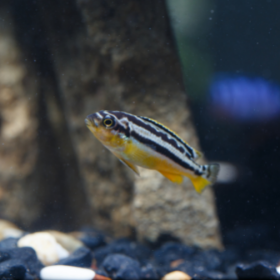People that suffer from stroke are significantly more at risk of developing dementia in their following years. The damage caused by blood in the brain after a stroke is immediately catastrophic. The volume of blood and fluid released into the brain upon spontaneous blood vessel rupture causes a mass effect, displacing brain tissue and increasing swelling against the skull. The result of toxic blood components and red blood cell lysis on the brain tissue is a massive pro-inflammatory response, which further exacerbates swelling and injury. The symptoms of stroke and dementia are comparable; memory loss, reduction in cognitive skills, mood changes and difficulty performing routine activities.
The immune response to brain haemorrhage has long been in an interesting therapeutic target, the response to blood in the brain can both worsen pathology or start the recovery processes, a timeline key in determining patient outcome and disability. Understanding the genetic regulation of these cells will tell us which processes and pathways are dysregulated after a brain haemorrhage, and may help to reduce secondary brain injury caused by excessive inflammation and reduce the incidence of post-stroke dementia. Recent studies suggest links between inflammation and cognitive decline. Using this evidence, Doyle et al. (2020) proposed a model of chronic brain inflammation, fuelled by innate and adaptive immune cells inability to efficiently remove myelin debris from the site of brain injury. The authors proposed that free radicals and oxidative stress caused by myelin release after stroke, lead to inefficient phagocytosis and consequently chronic inflammation and dementia.

Zebrafish embryos are nearly transparent which allows researchers to easily examine the development of internal structures. They also have a similar genetic structure to humans.
Our recent publication presents a dataset of genes expressed in macrophages and neutrophils that have been isolated from a zebrafish larvae after a brain haemorrhage. We use the zebrafish larvae because the development of the organism and disease pathology is very fast, and allows us to look at the early innate immune response to brain haemorrhage. This time frame of pathology is very difficult to address in mammalian models due to technical induction of ICH and clinical sampling. We have identified that there are various different metabolic and biosynthetic pathways that are dysregulated in these cells such as significant dysregulation of PPAR signalling in myeloid cells, which controls a network of genes involved in inflammation and lipid metabolism. Our dataset provides a platform for both pre-clinical and clinical researchers investigating inflammation during the acute phases of stroke by highlighting translationally relevant targets for therapeutic intervention. Parallels are often drawn between haemorrhagic and ischemic stroke, and modulation of the immune response is currently in phase II and phase III clinical trials respectively, and so we hope to provide a useful resource across the stroke field. Further studies using our resource will hopefully distinguish a timeline of cellular response and categorise the pro- and anti-inflammatory pathways for therapeutic targets to prevent cognitive decline after stroke.
Our work was funded by the AMS Springboard award (to PRK) and an NC3Rs studentship. You can find the full manuscript in the Journal of Cellular Neuroscience https://doi.org/10.3389/fncel.2021.660732 / Doyle et al 2020 doi: 10.1097/WCO.0000000000000783.
Data Records
The full RNA-Seq dataset is available on the figshare data sharing platform doi: 10.6084/m9.figshare.13664606. Data from the Theragen Etex Bioinformatics team are presented in an.xlsx file and contains raw expression data readings from each repeat in both leukocyte samples. Sheets containing gene name information corresponding to the ensembl gene ID for all 32,053 identified genes is included. Further sheets provide lists of significant differentially expressed genes in neutrophils and macrophages, respectively.
Authors

Dr Siobhan Crilly
Dr Siobhan Crilly is a Postdoctoral Research Associate at The University of Manchester, funded by the Stoke Association. Siobhan works with zebrafish models of brain haemorrhage and is interested in modelling in vitro in order to reduce the number of animals required for lab use. Outside the lab Siobhan enjoys designing and making clothes and talking to the public about her work.

James Cooper
James Cooper is a Research Technician at The University of Manchester, funded by the Academy of Medical Science Springboard award. James has an interest in understanding the role of innate immune cells that regulate inflammation following intracerebral haemorrhage. In his spare time he is currently training for a Marathon in October (Good luck James)
Do you use Zebra Fish in your research, share your thoughts. Reply in the box below

 Print This Post
Print This Post




